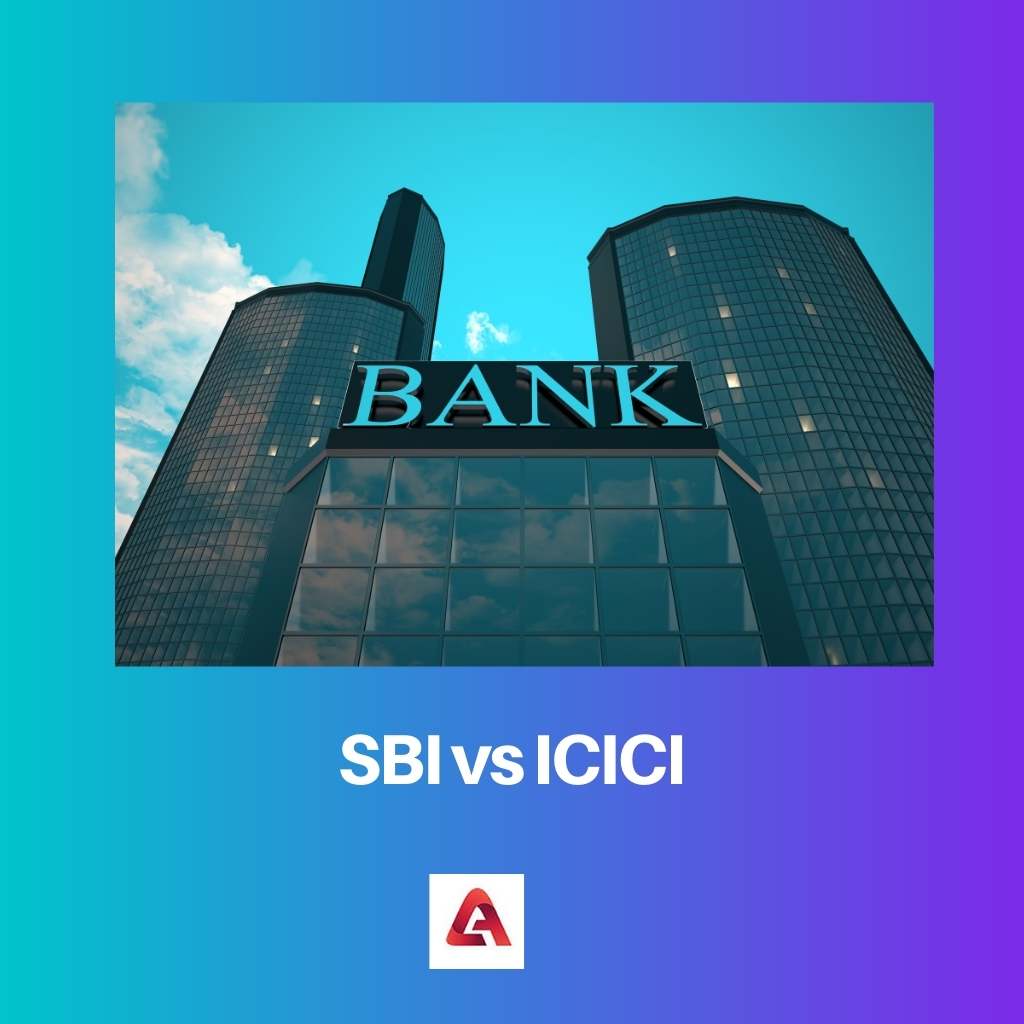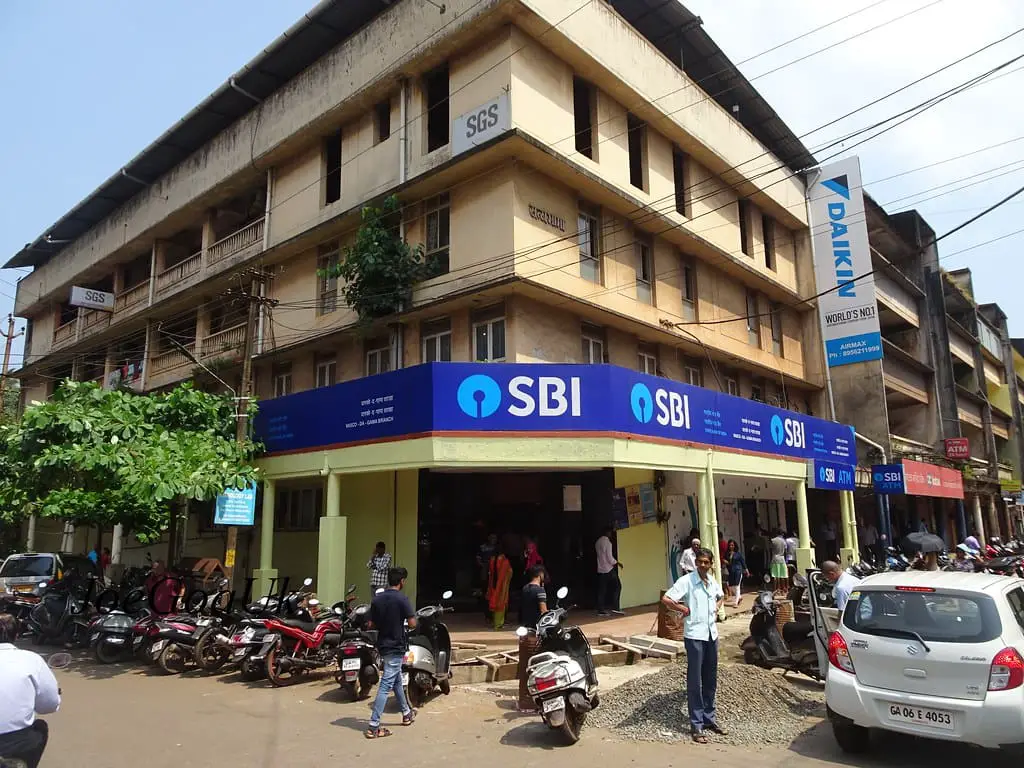In the customer service sector of the industrial society, customer satisfaction has become an essential instrument for both advertising and market reputation.
Customer happiness is widely acknowledged as a critical differentiating element that plays an important role in marketing practices and is the most important consequence of any marketing effort.
This article aims to determine the differences in the quality of service and customer satisfaction provided by SBI and ICICI Bank.
This article also helps you understand the features and distinctions of both banks and will help you determine which bank is the ideal one for you.
Key Takeaways
- State Bank of India (SBI) is a government-owned public-sector bank, whereas ICICI Bank is a private-sector institution.
- SBI boasts a more extensive branch network across India, whereas ICICI Bank has a stronger international presence.
- SBI focuses on financial inclusion and social initiatives, while ICICI Bank emphasizes technological innovation and customer-centric services.
SBI vs ICICI
State Bank of India (SBI) is India’s largest Government-operated bank with a rate of loan interests between 6.95-7.5%. SBI’s chairman is Mr Dinesh Kumar Khara. Industrial Credit and Investment Corporation of India (ICICI) is a private banking institution with a rate of loan interest between 6.75-7.55%. ICICI’s chairman is Mr Girish Chandra Chaturvedi.

SBI is a leading financial service incorporated by a government corporation based in Mumbai, India, which is one of the nation’s biggest banks. SBI is recognized throughout the world.
SBI is one of the major participants in the mortgage refinance and house loans industry, with fantastic home loan programs and incredible, reasonable interest rates.
In addition, the bank has integrated cutting-edge technology into its financial institutions, making it a user-friendly environment.
ICICI Bank is among India’s best-known international banks with a good customer base. It is the third biggest bank in total assets throughout the nation.
With both a broad range of services and an excellent assistance team (both online and offline), ICICI is the preferred bank for so many people around the country that amongst all the private banks, ICICI is the leading and reputed one.
Another of their most well-known products is a housing loan.
With such a wide choice of housing and property loan options, great customer service, and a large network of locations, ICICI bank wins the trust and respect of the majority of the salarymen and population of the country.
Comparison Table
| Parameters of Comparison | SBI | ICICI |
|---|---|---|
| Full Form | State Bank of India | Industrial Credit and Investment Corporation of India |
| Loan Extent | From 5 lakhs INR to 10 crores with a loan tenure of 30 years. | From 4 lakhs to 10 crores INR with a loan tenure of around 30 years. |
| Age limit | Loan applicants must have required identity proofs and must be at least 18 years old. | Loan applicants must be aged between 21 to 65 years of age. |
| ROI Percentage | 6.95 – 7.5 Percentage | 6.75 – 7.55 Percentage |
| Chairman | The chairman of SBI is Dinesh Kumar Khara | The chairman of ICICI is Mr. Girish Chandra Chaturvedi |
What is SBI?
The Government of India nationalized the State Bank of India (SBI) in the year 1955, making it a state-owned financial institution and finance and insurance corporation.
SBI has hundreds of portals in India, as well as operates in several countries across the globe. Mumbai is home to the bank’s head office.
The chairman of SBI is Dinesh Kumar Khara, and the SBI originated in 1806 when it was known as the ‘Bank of Calcutta’.
In India, SBI has approximately 24000+ facilities with excellent assistance throughout the country. Its income for the fiscal year 2012–13 was $2.005 trillion, with national activities accounting for 95.35 per cent of that.
In the very same economic year, domestic activities accounted for 88.37 per cent of overall earnings.
SBI hosted 11,300 workshops and established nearly 3 million registrations under the “Pradhan Mantri Jan Dhan Yojana” by October.
Which was implemented by the government in around August 2014 and comprised 2.1 million registrations in rural regions and 1.50 million accounts in metropolitan centres.
In 1960, SBI took ownership of 7 banks. They have been the erstwhile Indian princely kingdoms’ seven financial institutions located in the seven states that are now under SBI.
These banks were rebranded with a ‘State Bank of’ prefix to show the chain of banks operating with the State Bank. SBBJ, SBH, SBN SBM, and SBP are some examples located in Jaipur, Hyderabad, Indore, and Mysore.
The parent bank, SBI, gave all of these banking institutions an identical logo.

What is ICICI?
ICICI is the abbreviated form of Industrial Credit and Investment Corporation of India. It is a multinational investment bank and financial firm based and originated in India. It was founded on Jan 5, 1994, it has its headquarters in Mumbai, Maharashtra.
In India, the institutions have 5275 facilities and 15,589 ATMs spread throughout several states and UTs. It has representation in 17 countries around the globe.
It has affiliates in the United Kingdom and Canada, as well as branches in the United States, Qatar, Singapore, Oman, and many other countries across the world.
In addition to India, ICICI Bank maintains headquarters in the United Arab Emirates, Bangladesh, and Belgium.
ICICI Bank pioneered online banking in the year 1998, and in 1999 it became the first Indian firm and banking institution to be listed on the New York Stock Exchange.
ICICI is the bank of choice for many people across the nation. One of their most well-known products is a housing loan. It offers a diverse selection of home loan solutions and excellent client service.
ICICI Bank had a very successful financial year during 2001-2002 and 2005-2006. Its borrowing capacity shot up by 200 per cent, 5 times that of SBI at that time, and although SBI’s sales rose by 30%, the ICICI bank’s income increased by seven times that.
In terms of assets, this pattern indicates that ICICI’s expansion would ultimately exceed SBI’s.

Main Differences Between SBI and ICICI
- The full form of SBI is State Bank of India, whereas the full form of ICICI is Industrial Credit and Investment Corporation of India.
- SBI is a government-owned bank, whereas ICICI is a privatized banking institution.
- The chairman of SBI is Mr Dinesh Kumar Khara, whereas the chairman of ICICI is Mr Girish Chandra Chaturvedi.
- SBI originated in the year 1806, whereas ICICI originated in 1955.
- SBI has a rate of interest in loans of 6.95 – 7.5 per cent, whereas ICICI bank has an ROI of 6.75 – 7.55 per cent.

I found the post to be highly engaging and enlightening. It effectively highlights the core differences between SBI and ICICI, offering valuable insights for prospective banking clients.
The comparison table provides a clear and concise overview of the parameters of comparison between SBI and ICICI. It simplifies the complex aspects, making it a user-friendly resource.
I agree, Evie. The comparison table effectively summarizes key aspects of both banks, providing readers with a concise understanding. An exemplary display of comparative data.
Absolutely, Evie. The comparison table adds significant value to the post, enabling readers to efficiently comprehend the differences between SBI and ICICI. A well-structured resource.
The post seems to be favoring SBI over ICICI. It’s leaning towards promoting SBI with its extensive detail. A more balanced comparison would have been appreciated.
I see your point, Jason. The focus on SBI’s positive attributes is evident. A more equitable comparison would have been beneficial for readers looking for unbiased insights.
The comprehensive explanation of SBI’s financial inclusion and social initiatives is thought-provoking. It provides an in-depth understanding of the social responsibilities undertaken by the bank.
Absolutely, Alfie. The article’s focus on SBI’s role in financial inclusion and social initiatives is enlightening. It presents an insightful portrayal of the bank’s contributions.
I completely agree, Alfie. The article’s emphasis on SBI’s initiatives is commendable. It offers readers an enriched perspective on the bank’s community engagements.
The article does a great job of objectively discussing the key features and distinctions of SBI and ICICI. It’s a well-researched piece that provides readers with a balanced analysis of both institutions.
Absolutely, Daisy. The author’s unbiased approach to presenting the comparison allows readers to form their own opinions based on factual information. A commendable piece indeed.
The article has provided a comprehensive and detailed comparison between the two banks, SBI and ICICI. The post is highly informative and provides a clear understanding of both banks’ services and features. It’s an excellent resource for anyone considering these banks for financial services.
I couldn’t agree more, Katie. The information shared in this article is extremely valuable for anyone looking to make an informed decision about selecting a bank. It’s great to see such insightful content.
The article provides a comprehensive breakdown of the loan parameters, age limits, and other crucial features of SBI and ICICI. It’s an enriching read for individuals wanting to compare the two banks.
Absolutely, the detailed analysis of both banks’ loan aspects and critical details is praiseworthy. A commendable piece of comparative research.
I couldn’t agree more, Caroline. The detailed comparison allows readers to make informed decisions about their banking choices. Kudos to the author for this insightful content.
The post’s emphasis on the technological innovation and customer-centric services of ICICI Bank is impressive. It provides clarity on the bank’s strengths, making it an engaging read.
I concur, Jeremy. The in-depth coverage of ICICI’s technological innovation and customer service is noteworthy. It adds great value to the comparison.
Indeed, Jeremy. The detailed insights into ICICI’s focus on customer-centric services are commendable. The post effectively highlights the bank’s competitive advantages.